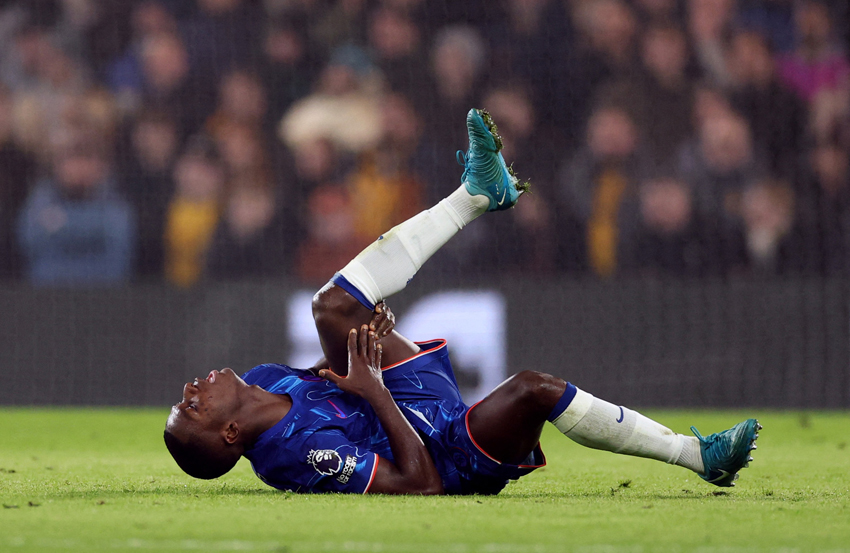Inspiratory stridor
How do you deal with 'asthma' when the drugs don't work?
Athletes, coaches, sports doctors and therapists need to be aware of a newly emerging respiratory problem, which needs to be recognised and treated if it is not to threaten promising sporting careers.Wheezing and breathlessness are normally taken to be signs of asthma and treated with inhaled medication. The trouble is, though, that for a small number of athletes affected by these symptoms, the drugs don’t work and they are then often dismissed by their GPs on the grounds that nothing is wrong with them. To make matters worse, misdiagnosis of their symptoms can lead these athletes into a cycle of under-performance, anxiety and worsening symptoms that can culminate in a complete inability to train.
Why don’t the drugs work? The reason is just beginning to come to light and is fairly obvious once the athletes concerned undergo exercise challenge tests and have their lung function assessed; quite simply, they don’t have asthma. Working out what is actually wrong can be difficult, but the commonest diagnosis is a condition known as ‘inspiratory stridor’ (IS), caused by vocal cord dysfunction (VCD).
During normal breathing, the vocal cords of the larynx abduct (move apart) during inspiration to allow air to pass freely through the glottis – the part of the airway that goes through the larynx. In people with VCD, there is paradoxical movement of the vocal cords which, instead of moving apart, close over the airway, severely reducing the size of the glottis and creating a huge increase in the flow resistance and work of breathing. The obstruction results in extreme breathlessness and a characteristic wheezing sound (stridor) that is reminiscent of sawing. It is this breathing sound, in combination with exercise-induced breathlessness, that many athletes, coaches and even doctors misinterpret as asthma.
However, the sound associated with VCD is subtly different from that observed in people with exercise-induced asthma (EIA). In asthma, the wheeze occurs primarily on expiration, has a smooth, slightly lower pitch, and is dominated by sounds from the chest. By contrast, people with VCD exhibit a strong, high-pitched ‘sawing’ wheeze that emanates from the neck. The timing of the symptoms is also key to the diagnosis: with EIA, symptoms occur during the 5-10 minutes immediately after exercise, while with IS symptoms occur during exercise and resolve rapidly afterwards. It should also be stressed at this point that there are some pathological conditions that cause VCD, such as gastrointestinal reflux disease (more commonly known as heartburn), and these must be excluded as potential causes of IS.
Since people with IS exhibit no abnormality of breathing at rest, a definitive diagnosis involves observation of the vocal cords during exercise; clearly, though, this is extremely invasive, so other methods have been explored. The most promising of these involves a laboratory exercise test, with continuous monitoring of flow and volume changes during breathing(1).
In a single case study, the authors reported a very minor abnormality of the inspiratory flow profile at low work intensities, with a gradual worsening as intensity increased. The abnormality was manifested as a ‘saw-tooth’ pattern to the normally smooth inspiratory flow profile. At maximal exercise, there was a sudden drop in respiratory flow rates, loud stridor and severe breathlessness, accompanied by reduced arterial oxygen saturation (to 92%) and increased levels of carbon dioxide. This method of exercise testing appears to elicit signs that are very specific to VCD and could provide a useful diagnostic approach for the future.
Prevalence of IS and VCD
The prevalence of IS and VCD has been reported in a number of studies. The most comprehensive assessment, most relevant to readers of Sports Performance Bulletin, was a study of 370 élite athletes tested at the US Olympic Training Centre at Lake Placid(2). The authors reported that 5% of study participants had IS. Of these, half also had EIA, confirming previous observations from smaller studies incorporating sub-élite and non-athletic individuals(3,4).Other interesting findings included a higher prevalence of IS in women and in outdoor athletes – the former being a consistent finding from a number of studies(3,5,6). The authors also observed a relatively high prevalence of VCD and IS in adolescent females; of 22 patients aged 18 or less studied in a specialist centre for speech and other laryngeal problems, 18 were female. Interestingly, they found that a significant contributor to VCD was stress induced by ‘organised sports’, an association which is a common feature of reports on IS the literature(4,5).
Another recent study, this time on army recruits, suggests that the prevalence of VCD is much higher in people who report symptoms of breathlessness (as opposed to a random sample of people). In this study, 15% of the 40 participants with breathlessness had VCD(4).
The following conclusions can be drawn from these studies:
- Some 5% of athletes are affected by IS;
- Half of these also suffer from exercise-induced asthma;
- IS is most common in women, especially adolescents;
- It may also be more common among outdoor athletes;
- Psychological stress (eg competition anxiety) may be a predisposing factor in the acute and chronic development of IS.
Recent evidence from an anaesthetised human(8) and animal model(9) suggests that an important factor in triggering paradoxical activation of the vocal cord adductor (closing the airway) during inspiration is the development of a pressure gradient in the airway on either side of the larynx. A pressure gradient across the laryngeal airway (glottis) triggers a reflex activation of the vocal cord adductors, which makes the pressure differential worse, producing a ‘vicious cycle’ of paradoxical vocal cord behaviour(9).
The role of anxiety
This reflex may provide a physiological explanation for the role of anxiety in the development of IS. Anxiety has been shown to cause the vocal cords to adduct(10), producing considerable constriction of the glottis. Constriction will inevitably generate a pressure differential across the glottis that may trigger the further reflex adduction of the cords, and a vicious cycle of breathing difficulty and anxiety.What can be done to treat and manage this career-threatening condition? Treatment has focused primarily on speech therapy interventions and confidence building in an attempt to reduce anxiety and gain confidence and control over breathing(8). Techniques include coaching in the conscious control of laryngeal function and diaphragmatic breathing, backed up by daily practice sessions. Sufferers are encouraged to develop a ‘relaxed throat’ breathing technique.
Mastering these techniques under conditions of high minute ventilation and stress can be challenging; but simply making athletes aware of how their throat muscles can affect their breathing is enough to enable them to ‘think their way’ out of the problem.
Another useful technique I have used in my own dealings with athletes affected by IS is a resistance training technique known as ‘pressure threshold inspiratory muscle training’ (IMT). IMT can be thought of as ‘dumbbells for your diaphragm’. Using a specially-designed training device, inspiration can be ‘loaded’, with the result that the inspiratory muscles become stronger, more powerful and resistant to fatigue.
Inspiratory muscle training
Using an individual case study approach, as yet unpublished, my colleagues and I have demonstrated that four to eight week periods of IMT considerably improve symptoms, reduce wheezing and restore confidence.Our eight-week training programme relies on a device known as the POWERbreathe inspiratory muscle trainer. For the first four weeks, the athlete trains twice daily with an inspiratory load equivalent to their 30 repetition maximum. (It is pretty easy to identify this load by trial and error over the first two to three training sessions.)
For the next four weeks, the training load is increased to a 10 repetition maximum, but is undertaken as three sets (one minute apart) twice daily. Thereafter it is possible to maintain the gains in performance by training once daily every other day. Inspiratory muscle training offers the added benefit of an independent ergogenic effect on time trial performance (see PP171, October 2002).
The success of IMT in the treatment of IS is poorly understood at present and is probably multi-factorial. However, we can make some educated guesses about how it may be helping. First, it is now well documented that IMT reduces the intensity of breathlessness and the sense of effort when breathing against an inspiratory load(11); secondly, it is possible that IMT may also train the laryngeal muscles (especially those that abduct the vocal cords to open the airway), making them more effective at keeping the glottis open.
Finally, chronic exposure of the airway to negative pressure (as occurs during inspiratory loading) may reduce the sensitivity of the receptors that induce reflex adduction of the cords in response to a pressure gradient across the glottis.
At present, these ideas are purely speculative, but our anecdotal observations certainly support a beneficial effect of IMT on symptoms of IS. An added benefit of IMT is that loaded breathing is a very effective tool for helping athletes to develop conscious control over the complex combination of muscles that contribute to inspiration (diaphragm, chest wall, neck).
As a drug-free intervention, IMT can be recommended without hesitation for the treatment and management of IS; a training regimen requiring the generation of relatively high inspiratory pressure (three sets of a 10 repetition maximum) is likely to yield the best results.
Any athlete with persistent symptoms of exercise-induced breathlessness that are accompanied by loud inspiratory wheeze and do not respond to asthma medication should be suspected of having VCD and IS.
In addition, it is important to remember that half of athletes with IS may also have exercise-induced asthma, allowing the IS part of the problem to be overlooked and left untreated. However, forewarned is forearmed, and by reading this article, you have already taken the first step towards recognising the problem either in yourself or in others.
Alison McConnell
You need to be logged in to continue reading.
Please register for limited access or take a 30-day risk-free trial of Sports Performance Bulletin to experience the full benefits of a subscription. TAKE A RISK-FREE TRIAL
TAKE A RISK-FREE TRIAL
Newsletter Sign Up
Testimonials
Dr. Alexandra Fandetti-Robin, Back & Body Chiropractic
Elspeth Cowell MSCh DpodM SRCh HCPC reg
William Hunter, Nuffield Health
Newsletter Sign Up
Coaches Testimonials
Dr. Alexandra Fandetti-Robin, Back & Body Chiropractic
Elspeth Cowell MSCh DpodM SRCh HCPC reg
William Hunter, Nuffield Health
Keep up with latest sports science research and apply it to maximize performance
Today you have the chance to join a group of athletes, and sports coaches/trainers who all have something special in common...
They use the latest research to improve performance for themselves and their clients - both athletes and sports teams - with help from global specialists in the fields of sports science, sports medicine and sports psychology.
They do this by reading Sports Performance Bulletin, an easy-to-digest but serious-minded journal dedicated to high performance sports. SPB offers a wealth of information and insight into the latest research, in an easily-accessible and understood format, along with a wealth of practical recommendations.
*includes 3 coaching manuals
Get Inspired
All the latest techniques and approaches
Sports Performance Bulletin helps dedicated endurance athletes improve their performance. Sense-checking the latest sports science research, and sourcing evidence and case studies to support findings, Sports Performance Bulletin turns proven insights into easily digestible practical advice. Supporting athletes, coaches and professionals who wish to ensure their guidance and programmes are kept right up to date and based on credible science.









